Por Sheilla Cohen.
Al Freeman (1981, Toronto, Canadá) realiza esculturas blandas a gran escala que representan objetos cotidianos, como lápices, latas de refresco, cigarrilos o una penes, y los convierte en materiales maleables y táctiles. Basándose en un pozo interminable de imágenes en los alcances de internet, Freeman deconstruye artísticamente artefactos a menudo codificados por los hombres, encontrando una elegancia formal en el detrimento de la vida cotidiana. La artista canadiense radicada en Nueva York ha creado una secuencia de obras nuevas, inmortalizando de diversas formas, un espejo roto, un paquete de cigarrillos y una lámpara de araña.

Cortesía del estudio de Al Freeman.
Al presentar sus obras de poliéster, tela y piel sintética como parcialmente desinfladas, imbuye lúdicamente una lata de cerveza, un martillo o una lámpara de lava con un mensaje de masculinidad subvertida. Drenados de su virilidad y agrandados a un tamaño ridículo, los objetos están revestidos de un humor que satiriza la simulada comodidad del consumismo desenfrenado.
Para Bajo la loggia, una muestra colectiva al aire libre compuesta por diez esculturas presentada por Winter Street Gallery en la Galería Hilario Galguera de Ciudad de México. Con obras nuevas y recientes de Carl D’Alvia, Al Freeman, Tony Matelli y Kayode Ojo, la exposición ofrece una nueva visión de la escultura contemporánea a través de las prácticas de cuatro artistas radicados en Nueva York.
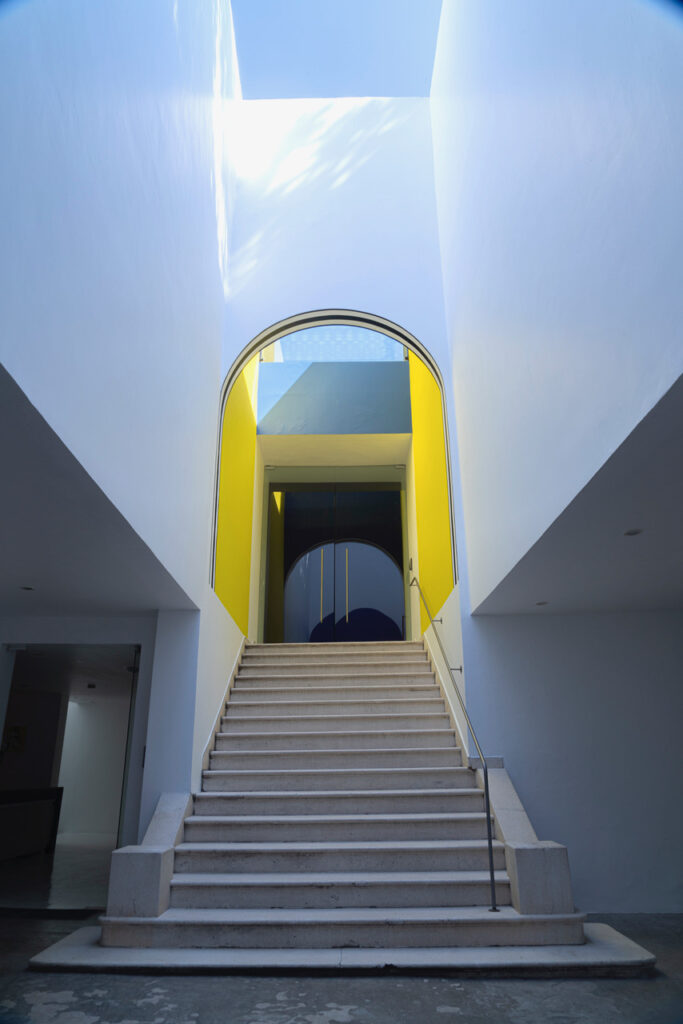
Foto: José Rodríguez.
Invocando una serie de referencias sociales e históricas del arte, las obras incluidas revelan aspectos humorísticos y misteriosos demostrando actitudes sorprendentemente individuales hacia la cultura visual. Platicamos con la artista para que nos contara acerca de su práctica artística y el concepto detrás de su reciente cuerpo de obra.
Tus obras de arte tratan de un conjunto de referencias muy particular. ¿Qué te impulsó a articularlos en forma escultórica?
Las referencias se acumularon durante mis años delirantes después de la escuela de posgrado, cuando pasé mucho tiempo en la cama navegando por la web, evitando hacer arte y no tener exposiciones. Una de las mejores cosas de ser un “perdedor” por un tiempo antes de exhibir es que almacenas muchas ideas, tanto intencionalmente como involuntariamente.
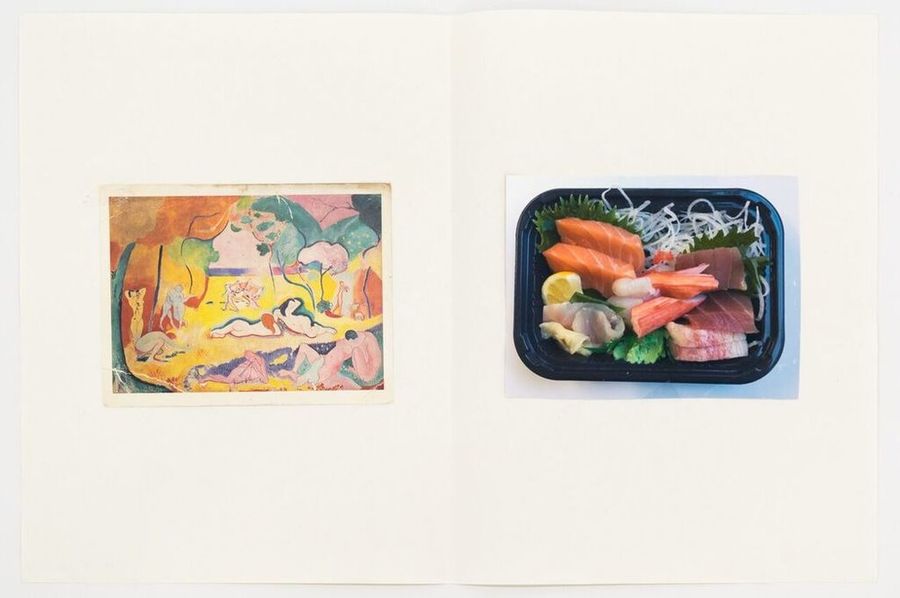
Cortesia: Galería 56 Henry.
¿Cómo te inclinaste por la ‘escultura blanda’ como medio por el cual vocalizar estos diversos objetos?
Durante los primeros siete años después de la escuela, tuve dificultades para aceptar mi ansiedad por ser una “pintora”. La mayoría de las veces fallaba en hacer arte y por eso pasaba tanto tiempo en Internet. Pensé que podría encontrar algunas respuestas acumulando todo tipo de imágenes digitales, tanto gratuitas como detrás del paywall, aunque la mayor parte de lo que se encuentra detrás éste, son solo más paywalls y la falsa promesa de más respuestas. En ese momento tenía un novio que se parecía a los sofás de fraternidad rotos y mullidos que estaba «investigando». Estaba mirando una foto de él desnudo en un sofá y comencé a pensar en el tropo de una musa reclinada.

Cortesía: Galería Galería 56 Henry.
Me di cuenta de que la figura humana era redundante y que el propio sofá podía ser la musa. Así que compré el sillón reclinable que estaba viendo en Craigslist, quité la armadura y la maquinaria interna y volví a juntar todas las partes blandas como un cuerpo sin esqueleto. Para que colgara correctamente compré un poco de tela vinílica para reconstituir la espalda. Lo colgué planamente en la pared y adquirió una cualidad antropomórfica, como un crucifijo grueso o un abrazo confeccionado.
Después de hacer esa pieza, me pregunté si podría hacer otro objeto con el vinilo sobrante, así que cosí a mano una bebida suave Monster Energy. Me encantó lo flojo que era y decidí que lo que quería hacer funcionaba bien como escultura.

Cortesía: Galería 56 Henry.
¿Existe un proceso en particular mediante el cual seleccionas imágenes antes de traducirlas en una obra de arte?
No hay un proceso codificado; las obras originales provienen de las imágenes de la fraternidad y la lucha libre amateur que estaba viendo, por razones no relacionadas con el arte. Recientemente he estado trabajando en torno a un tema o tema que quiero explorar y tomo decisiones de manera más intuitiva.
¿Hay influencias específicas que están presentes en tu trabajo?
Me obsesioné con la historia del arte cuando era estudiante y durante mis años en Internet, pero esas influencias se sienten ahora obsoletas, especialmente cuando las veo reproducidas interminablemente por otros artistas.
Tiendo a estar más influenciada por el material que no es necesariamente artístico. Me gusta tomar referencias de los fenómenos culturales que no he visto expuestos en un contexto artístico y forzarlos a que se conviertan en uno. Es por eso que me atrajeron los sofás de Craigslist, la cultura de fraternidad y los hombres que son «post-cool» (como los etiquetó mi amigo) porque resultaban poca frescura y operaban fuera del buen gusto establecido.
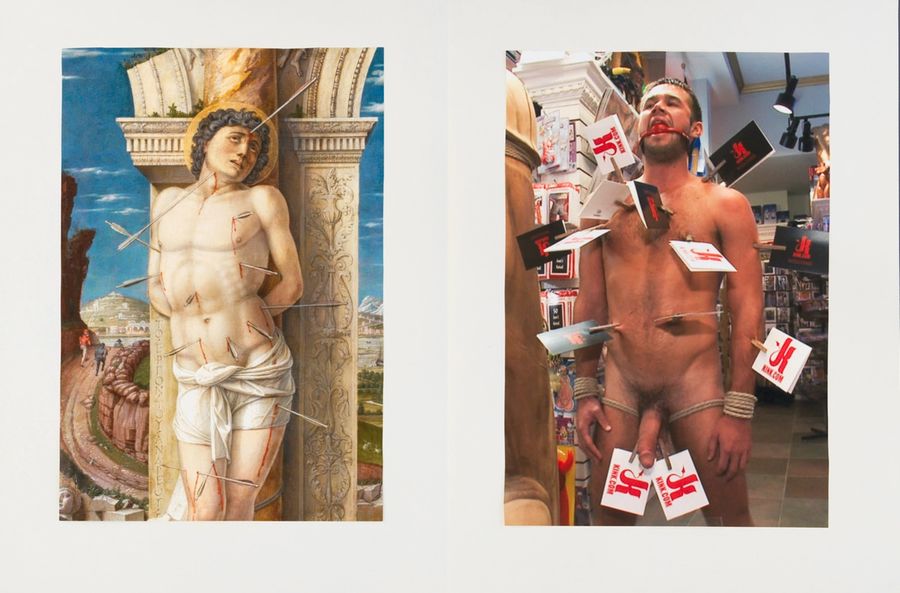
Cortesía: Galería 56 Henry.
¿Ha habido una evolución temática dentro de tu trabajo? ¿Te has encontrado gravitando hacia ciertas ideas que quizás estaban menos presentes al principio de tu carrera?
Se hablaba de mis esculturas blandas originales como «objetos cotidianos», lo cual no es del todo incorrecto, pero eran más específicas que eso. Apuntaba hacia la cultura de la fraternidad. Un amigo dice: «Estaba engañando a los hermanos de una fraternidad de violación».
Mi trabajo siguió en esa línea durante algunos años hasta ahora. Actualmente, estoy haciendo un espectáculo de almohadas de mi novio, que son retratos hechos a partir de la memoria de los ex amantes de mi amiga y los míos. Si bien mi trabajo anterior incluía ocasionalmente parte del cuerpo fragmentado, esto es una desviación de los objetos originales. Las nuevas obras son figuras directamente autobiográficas y completamente desarrolladas, pero aún dentro de la misma constelación de intereses que componían las obras originales.
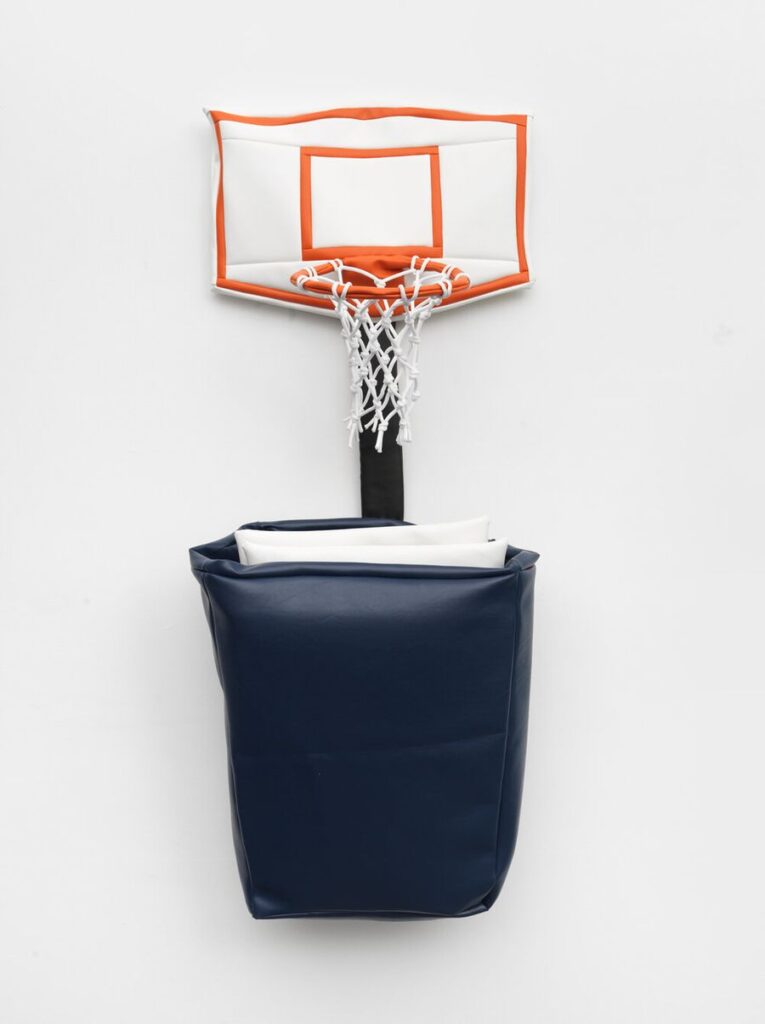
Cortesía: Galería 56 Henry.
Tu trabajo es ingenioso y satírico, pero al mismo tiempo, también crítico. ¿Hay un sentimiento en particular que esperas dejar con tu espectador?
Realmente nunca sé quién verá mi trabajo, por lo que parece imposible pensar en una audiencia o dejar que ellos informen sobre el proceso. Por lo general, solo trato de entretenerme a mí mismo y a algunos amigos en los que confío. Dicho esto, siempre es genial cuando alguien entiende la broma. Si no es así, eso también es interesante.
Algunos han calificado tu trabajo de feminista, ¿estás de acuerdo?
¿Tú sí?
¿Puedes contarnos un poco sobre las obras que presentas en la exposición colectiva “Bajo la Loggia” organizada por Winter Street Gallery en la Sculpture Terrace de la Galería Hilario Galguera?
Marco dice que a los mexicanos les encanta mirarse en los espejos.
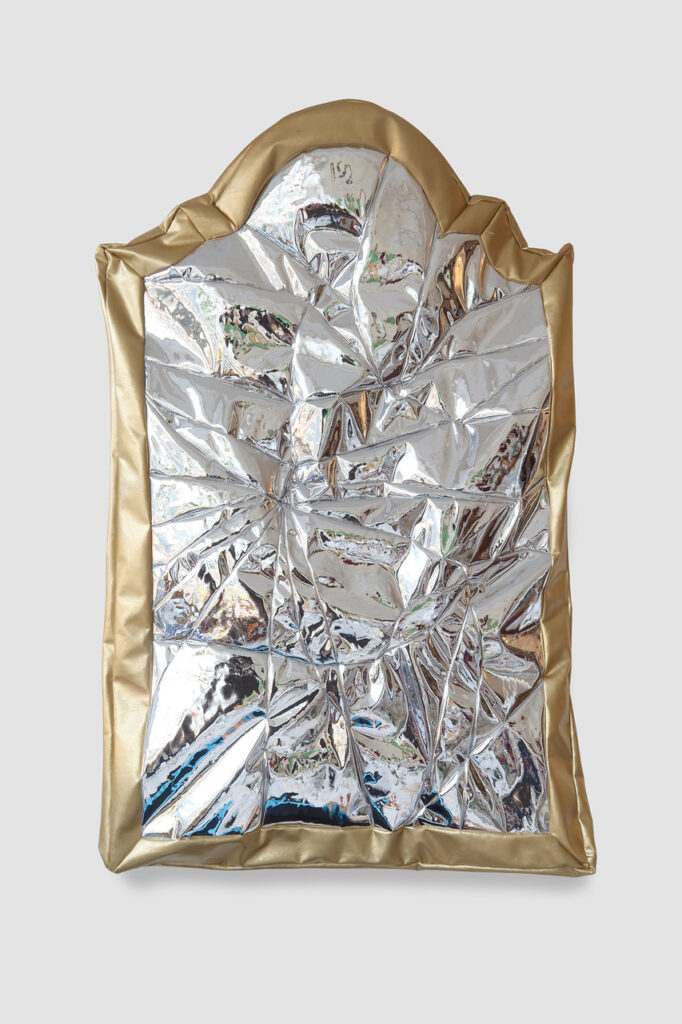
Cortesía del estudio de Al Freeman
Bajo de la Logia
22.04.21-23.07.21
______________________________________________________________________________
A satirical portrait of the quotidian
By Sheilla Cohen.
Al Freeman (1981, Toronto, Canada) creates large-scale soft sculptures that represent everyday objects; such as pencils, soda cans or dicks, and turns them into malleable and tactile materials. Drawing on an endless well of images on the internet reaches, Freeman artistically deconstructs artifacts often encoded by men, finding a formal elegance at the detriment of everyday life.
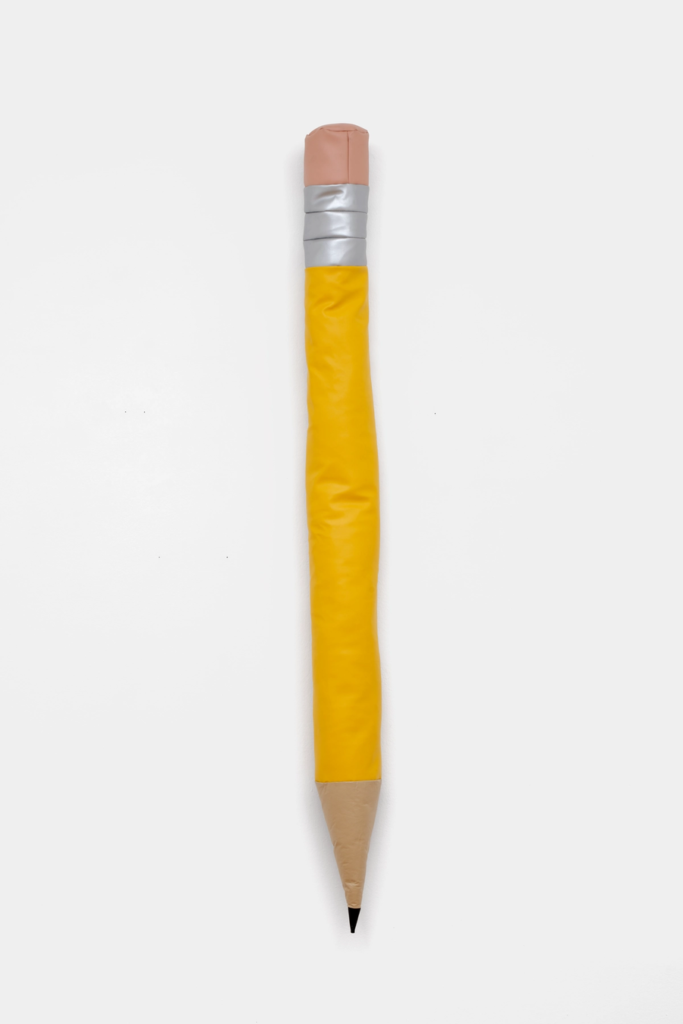
Courtesy of 56 Henry Gallery.
The Canadian born artist based in New York has created a new series of works, immortalizing a broken mirror, a pack of cigarettes and a spider chandelier. For «Under a Loggia», a collective outdoor exhibition conformed by ten sculptures, presented by Winter Street Gallery at the Hilario Galguera Gallery in Mexico City. Featuring new and recent works by Al Freeman, Carl D’Alvia, Kayo de Ojo and Tony Matelli, the exhibition offers a new vision of contemporary sculpture through the practices of four New York-based artists.
Invoking a series of social and historical references to art, the included works reveal humorous and mysterious aspects demonstrating surprisingly individual attitudes towards visual culture. Presenting her polyester, fabric, and faux leather works as partially deflated; where she playfully imbues a beer can, a hammer, or a lava lamp with a message of subverted masculinity. Drained of their manhood and enlarged to a ridiculous size, the objects are clothed in humor that satirizes the simulated comfort of unbridled consumerism. We spoke with the artist so she could tell us more about her artistic practice and the concept behind her recent body of work.

Cortesía Galería Hilario Galguera.
Foto: Victor Mendoza
Your artworks deal with a very particular set of references. What prompted you to articulate these in sculptural form?
The references built up during my delirious years after grad school when I spent a lot of time in bed cruising the web, avoiding making art and having no shows. One of the great things about being a loser for a while before showing is that you bank a lot of ideas both intentionally and unintentionally.
How did you settle on ‘soft sculpture’ as the means by which you vocalize these various objects?
During the first seven years after school, I had a hard time coming to terms with my anxiety around being a “painter”. I was mostly failing at making art and that is why I spent so much time on the Internet. I thought I could find some answers by hoarding all sorts of digital images both free and behind the paywall. Though most of what you find behind the paywall is just more paywalls, and the false promise of more answers.

Courtesy of 56 Henry Gallery
At the time I had a boyfriend who resembled the overstuffed, torn frat sofas I was “researching”. I was looking at a photo of him naked on a couch and started thinking about the trope of a reclining muse.
I realized the human figure was redundant and that the sofa itself could be the muse. So I bought the recliner I was looking at on Craigslist, removed the armature and inner machinery, and put all the soft parts back together like a body without a skeleton.
To make it hang properly I bought some vinyl fabric to reconstitute the back. I hung it flat on the wall and it took on an anthropomorphic quality, like a fat crucifix or a readymade hug.
After making that piece I wondered if I could make another object with the leftover vinyl, so I hand-stitched a soft Monster Energy drink. I loved how limp it was and decided that what I wanted to do worked well as sculpture.
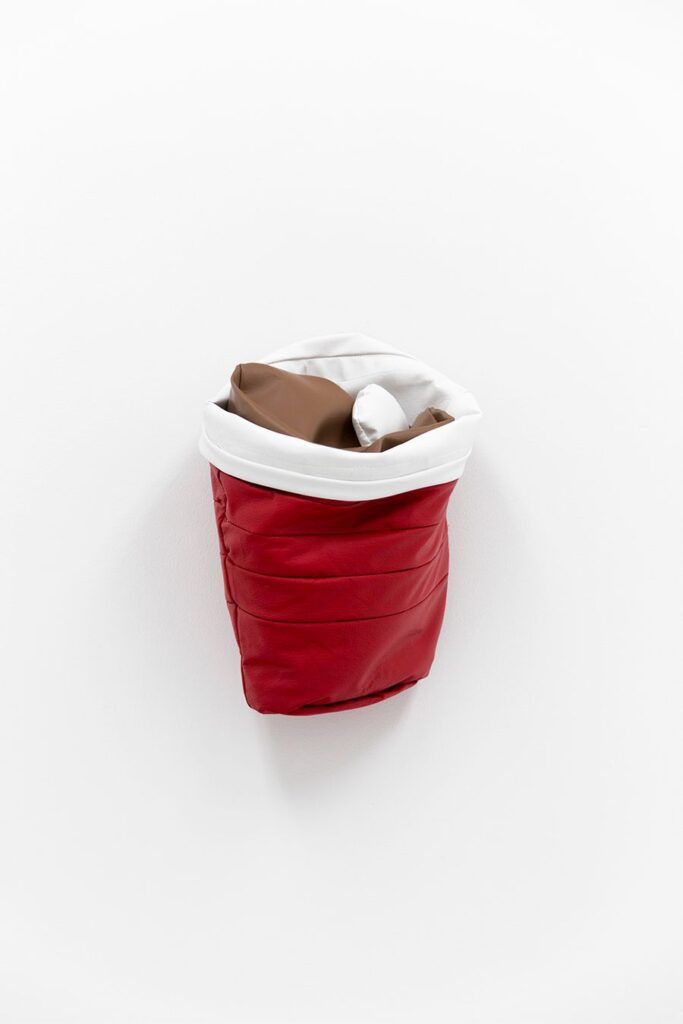
Courtesy of 56 Henry Gallery
Is there a particular process by which you select imagery before translating it into an artwork?
There isn’t a codified process; the original works came from the fraternity and amateur wrestling imagery I was looking at, for non-art-related reasons. Recently I have been working around a theme or topic I want to explore and I make decisions more intuitively.
Are there specific influences that you feel are present in your work?
I obsessed over art history while I was a student and during my Internet years, but those influences feel played out now, especially when I see them endlessly rehashed by other artists.
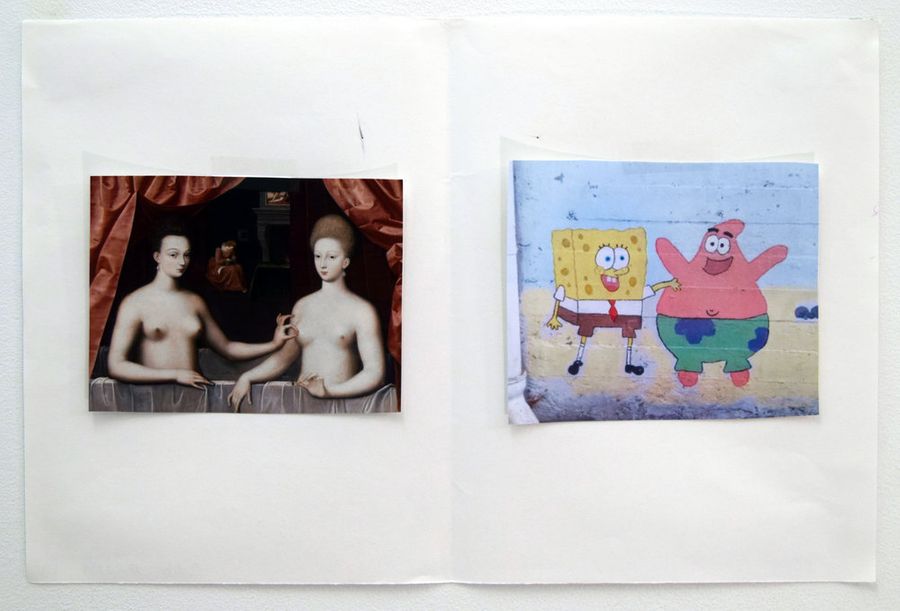
Courtesy of 56 Henry Gallery.
I tend to be more influenced by non-art source material. I like to take from cultural phenomena that I have not seen situated in an art context and force them into one. That’s why I was drawn to Craigslist sofas, frat culture, and men who are “post-cool” (as my friend labeled them) because these things carried zero coolness currency and operated outside of established good taste.
Has there been a thematic evolution within your work? Have you found yourself gravitating towards certain ideas that were perhaps less present earlier on in your career?
My original soft sculptures were spoken of as “everyday objects” which is not entirely wrong, but they were more specific than that. I was pointing toward fraternity culture. One friend says «I was cucking rape-y frat bros».

Courtesy of 56 Henry Gallery.
My work followed in that vein for a few years until now. Currently, I am making a show of boyfriend pillows, which are portraits made from memory of my friend’s ex-lovers, and my own. While my earlier work included the occasional fragmented body part, this is a departure from the original objects. The new works are directly autobiographical and fully fleshed-out figures, but still within the same constellation of interests that informed the original works.
Your work is witty and satirical yet, at the same time, also critical. Is there a particular feeling you hope to leave with your viewer?
I never really know who will see my work so it seems impossible to think about an audience or let them inform the process. Usually, I just try to entertain myself, and a few friends who I trust. That said it’s always great when someone gets the joke. If they don’t, that’s interesting too.
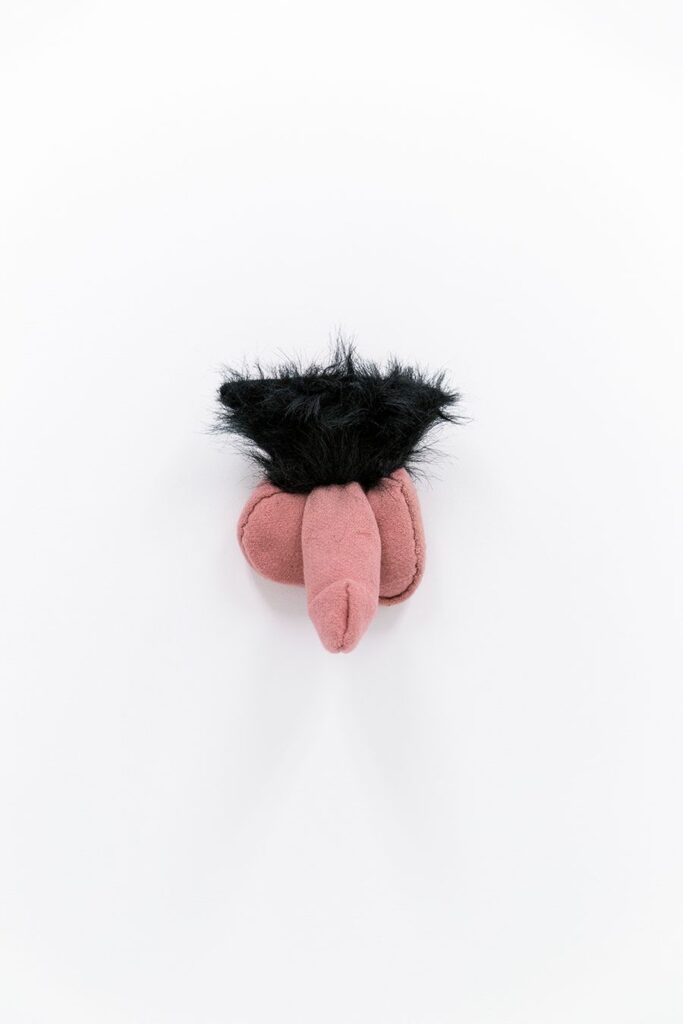
Courtesy of 56 Henry Gallery.
Some have described your work as feminist, do you agree?
Do you?
Can you tell us a little bit about the works you are presenting in the group exhibition “Under a Loggia” organized by Winter Street Gallery at Galería Hilario Galguera’s Sculpture Terrace?
Marco says that Mexican men love looking in mirrors.
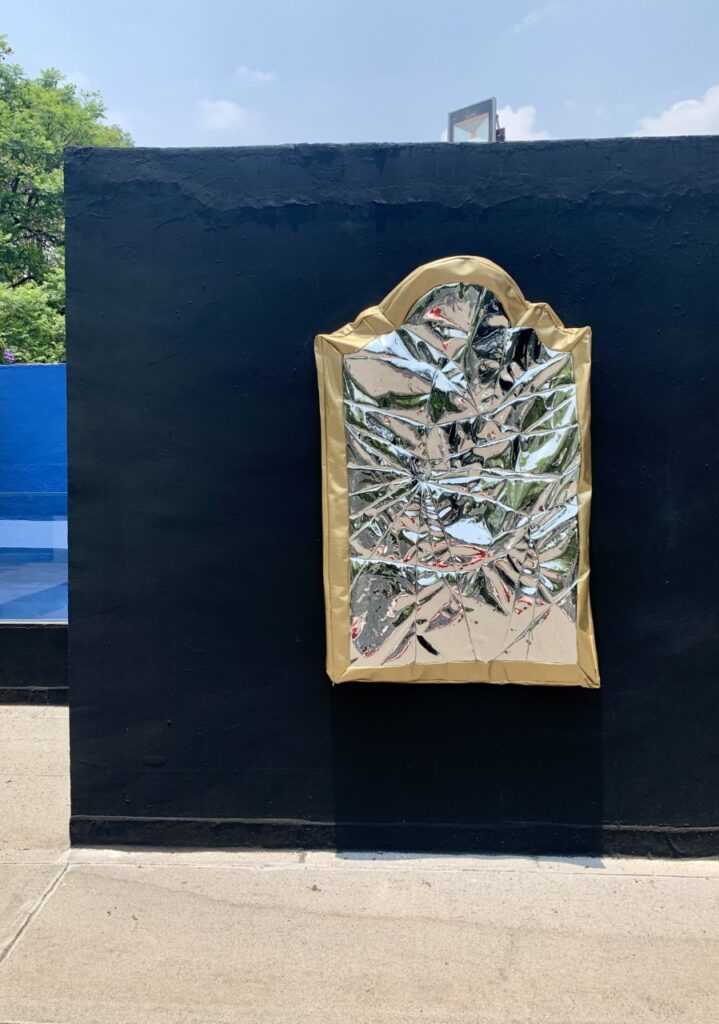
Installation view Under a Loggia at Galería Hilario Galguera
Under a Loggia
22.04.21-23.07.21


